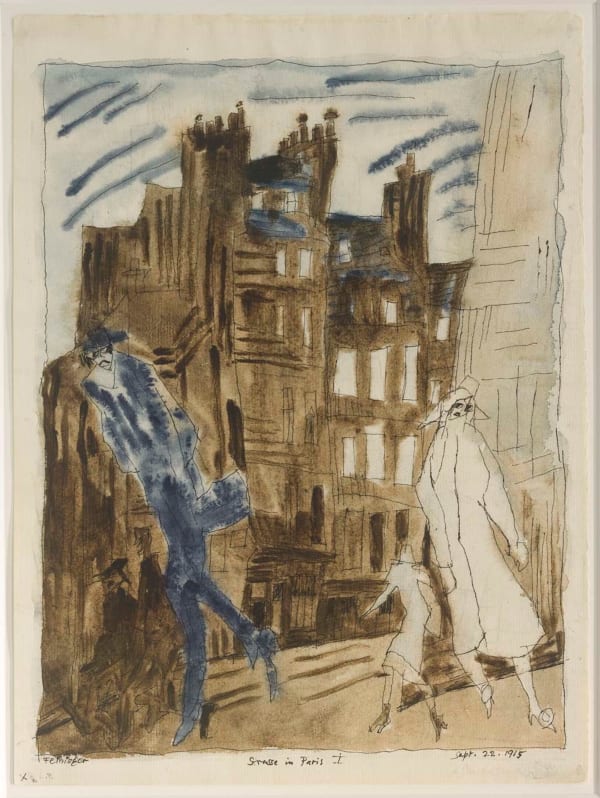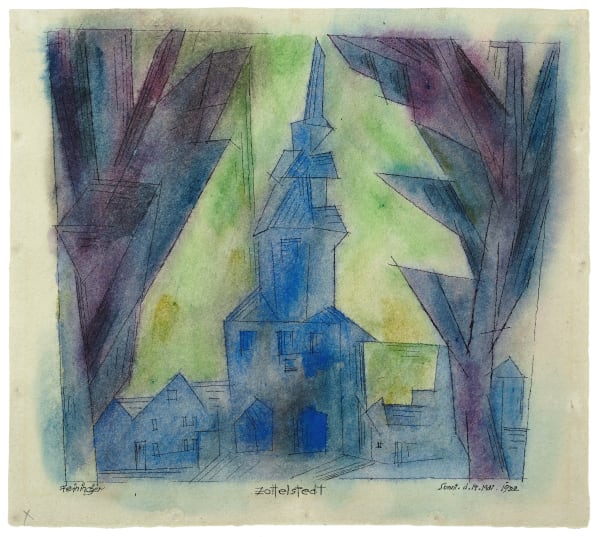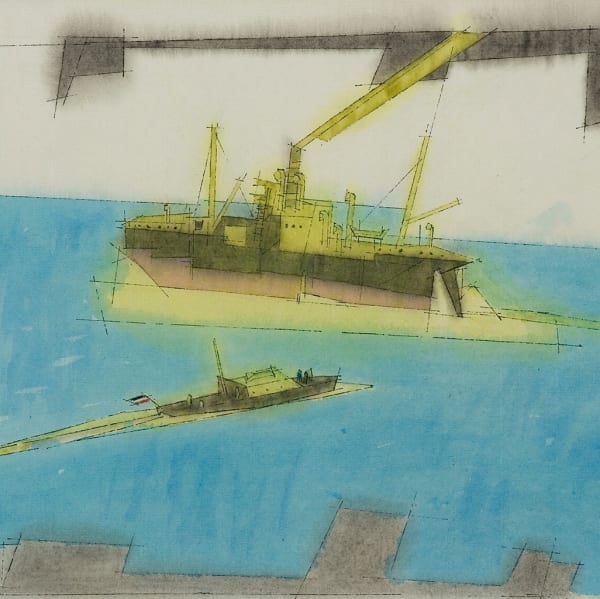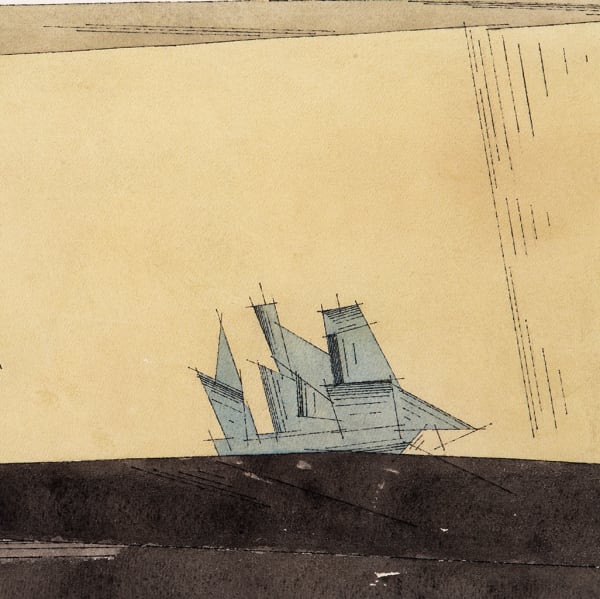LYONEL FEININGER American/German, 1871-1956
"Art is not a luxury, it is a necessity."
Lyonel Feininger was an American-German artist and member of the German Expressionist movement. Feininger work is often cited as combination of Cubism’s angular shapes with Expressionism’s emotionally charged paint handling. “Each individual work serves as an expression of our most personal state of mind at that particular moment and of the inescapable, imperative need for release by means of an appropriate act of creation: in the rhythm, form, color, and mood of a picture,” he once mused. Born Léonell Charles Feininger on July 17, 1871 in New York, NY, the artist traveled to Germany to study music initially, but once there turned his attention towards visual art. He studied at the Hamburger Gewerbeschule and the Königliche Akademie der Künste in Berlin where he was taught by Ernst Hancke. Feininger went on to exhibit extensively with both Wassily Kandinsky’s Der Blaue Reiter group and the Berlin Secession. In 1919, the same year he made his famed work The Cathedral he accepted the invitation to teach at the Bauhaus school. Also a celebrated illustrator of comics, Feininger’s graphic work was published in a variety of publications before he decided to exclusively pursued fine arts. The artist died on January 13, 1956 in New York, NY at the age of 84. He was notably the father of the photographer Andreas Feininger, whose celebrated black-and-white images documented the American landscape. Today, Feininger’s works are held in the collections of The Museum of Modern Art in New York, the Phillips Collection in Washington, D.C., and the Kunstmuseum Basel, among others.
-
 LYONEL FEININGERStrasse in Paris I, 1915Watercolor, ink and pen on paper33,8 x 23,4 cm
LYONEL FEININGERStrasse in Paris I, 1915Watercolor, ink and pen on paper33,8 x 23,4 cm
13 x 9 in -
 LYONEL FEININGERDas Signalschiff, 1920Watercolor, ink and pen on paper26,1 x 32,8 cm
LYONEL FEININGERDas Signalschiff, 1920Watercolor, ink and pen on paper26,1 x 32,8 cm
10 1/4 x 12 5/8 in -
 LYONEL FEININGERZottelstedt, 1922Watercolor, ink and pen on paper28,9 x 31,4 cm
LYONEL FEININGERZottelstedt, 1922Watercolor, ink and pen on paper28,9 x 31,4 cm
11 x 12 1/4 in -
 LYONEL FEININGERJachtrennen, 1926Watercolor, ink and pen on paper31,3 x 47,8 cm
LYONEL FEININGERJachtrennen, 1926Watercolor, ink and pen on paper31,3 x 47,8 cm
12 1/4 x 18 1/2 in -
 LYONEL FEININGERSommerwolken, 1927Watercolor, ink and pen on paper32,1 x 47,8 cm
LYONEL FEININGERSommerwolken, 1927Watercolor, ink and pen on paper32,1 x 47,8 cm
12 5/8 x 18 1/2 in -
 LYONEL FEININGERDüne am Abend II, 1937Oil on canvas48,3 x 77 cm
LYONEL FEININGERDüne am Abend II, 1937Oil on canvas48,3 x 77 cm
18 7/8 x 30 1/4 in -
 LYONEL FEININGERBlue Marine, 1943Watercolor, ink and pen on paper30,2 x 46,8 cm
LYONEL FEININGERBlue Marine, 1943Watercolor, ink and pen on paper30,2 x 46,8 cm
11 3/4 x 18 1/8 in -
 LYONEL FEININGERArchitektur mit Sternen II, 1945Oil on canvas40,6 x 71 cm
LYONEL FEININGERArchitektur mit Sternen II, 1945Oil on canvas40,6 x 71 cm
15 3/4 x 28 in











